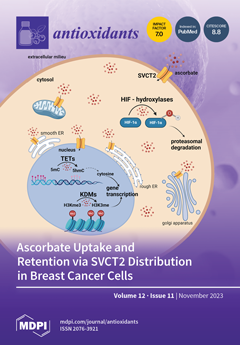The genus
Salvia L., belonging to the Lamiaceae family, contains more than 900 species distributed in various parts of the world. It is a genus containing aromatic plants used both in the culinary field and above all in the cosmetic area to produce several perfumes.
Salvia fruticosa Mill., notoriously known as Greek
Salvia, is a plant used since ancient times in traditional medicine, but today cultivated and used in various parts of Europe and Africa. Polar and apolar extracts of this plant confirmed the presence of several metabolites such as abietane and labdane diterpenoids, triterpenoids, steroids, and some flavonoids, causing interesting properties such as sedative, carminative, and antiseptic, while its essential oils (EOs) are mainly characterized by compounds such as 1,8-cineole and camphor. The aim of this work concerns the chemical analysis by GC and GC-MS, and the investigation of the biological properties, of the EO of
S. fruticosa plants collected in eastern Sicily. The gas-chromatographic analysis confirmed the presence of 1,8-cineole (17.38%) and camphor (12.81%), but at the same time, also moderate amounts of
α-terpineol (6.74%),
β-myrcene (9.07%), camphene (8.66%),
β-pinene (6.55%), and
α-pinene (6.45%). To study the protective effect of EOs from
S. fruticosa (both the total mixture and the individual compounds) on possible damage induced by heavy metals, an in vitro system was used in which a model organism, the liverwort
Conocephalum conicum, was subjected to the effect of a mix of heavy metals (HM) prepared using values of concentrations actually measured in one of the most polluted watercourses of the Campania region, the Regi Lagni. Finally, the antioxidant response and the photosynthetic damage were examined. The exogenous application of the EO yields a resumption of the oxidative stress induced by HM, as demonstrated by the reduction in the Reactive Oxygen Species (ROS) content and by the increased activity of antioxidant enzyme catalase (CAT) and glutathione-
S-transferase (GST). Furthermore, plants treated with HMs and EO showed a higher F
v/F
m (maximal quantum efficiency of PSII in the dark) with respect to HMs-only treated ones. These results clearly indicate the protective capacity of the EO of
S. fruticosa against oxidative stress, which is achieved at least in part by modulating the redox state through the antioxidant pathway and on photosynthetic damage.
Full article






